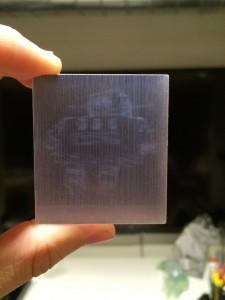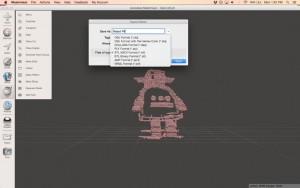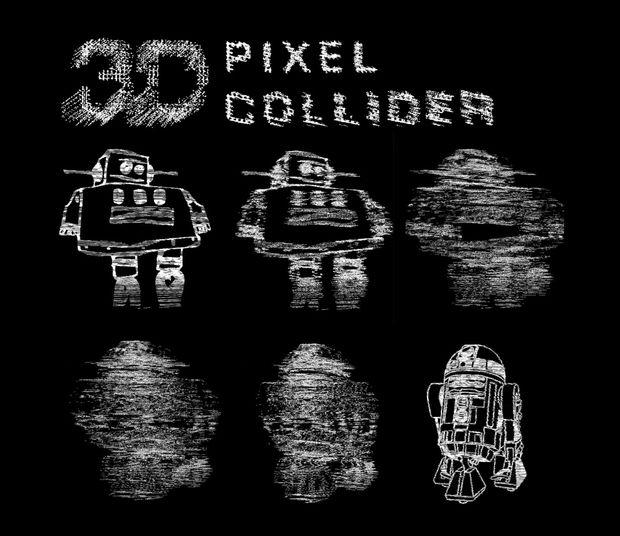Sebastian Morales Prado is a mechanical engineer in Chicago who, as he says, works to merge science and art. A graduate of the Illinois Institute of Technology, Morales now works for SmarterShade Inc. and serves as an artist in residence at Autodesk Pier 9.
“The idea of perceiving things in ways that they are not has always fascinated me,” says Morales. “This project was inspired by thinking about how we could visualize this distorted reality. How to create something that is something else?”
Morales says he used the Processing software suite to automate the creation of what he calls the 3D Pixel Collider rather than manually identifying and repositioning each pixel.
“The idea is to transform this [2D print] into a 3D print, where if seen from one side an image is visible, if seen from another side a completely different image appears,” Morales said of the process.
Processing 2.2.1 is the latest iteration of a programming language, development environment, and online community which debuted in 2001. It’s been downloaded almost two million times, and it was initially created to be a sort of “software sketchbook” and to teach programming fundamentals within a visual context, and the developers have a bit of sense of humor about what they created, as witnessed by their mission statement:
“Processing seeks to ruin the careers of talented designers by tempting them away from their usual tools and into the world of programming and computation. Similarly, the project is designed to turn engineers and computer scientists to less gainful employment as artists and designers.”
Morales turned to Meshmixer, as well as Autodesk Inventor with its Mesh Enabler, to get his .obj file into the appropriately 3D printable .stl file format.
For his 3D Pixel Collider object, Morales first organized the pixels of his two chosen 2D images — R2D2 and the Instructables robot mascot — on the y axis, and he says that was because both 2D images share would share that axis inside the final, 3D printed cube. The finished cube sits atop a light source which illuminates and reveals the images embedded within, providing a clearer look when lit.
“Then I simply replace the ‘z’ coordinate of one image with the ‘x’ of the other, and that is basically it,” he says.
While Morales says he has no formal training in coding, the result is a very cool end product indeed.
You can find detailed information on how Morales made his 3D Pixel Collider, and learn to make your own, in his Instructables.
The 3D printed cube shows, from two opposite sides, one image (R2D2) and on the other two sides, the other image (Instructables’ robot mascot). When looking at the cube from a side or not straight on, the image within is blurred between the two.
What do you think of the 3D Pixel Collider? Will you try to print one out for yourself? Let us know in the 3D Pixel Collider forum thread on 3DPB.com. Check out a short demonstration video, below, showing the images seen at different viewing angles.
Subscribe to Our Email Newsletter
Stay up-to-date on all the latest news from the 3D printing industry and receive information and offers from third party vendors.
You May Also Like
NSF Awards Kentucky $1M for Advanced Manufacturing
The National Science Foundation has awarded a $1 million grant to the University of Louisville for the Advancing Manufacturing and Building Construction Technologies (NSF AMT) project. This initiative is part...
3D Printing News Briefs, May 11, 2024: 3D Printed Stent, Tower, Sculptures, & More
We’re starting off with medical research in today’s 3D Printing News Briefs, as researchers in Korea used CT images and 3D printing to fabricate an educational simulator for a mastoidectomy....
3D Printing Unpeeled: Wind Turbines, Probiotics and Lenses
TPI Composites, ORNL and Ingersoll Rand are working to make wind turbine tooling segments that can be 18.3 meters long. These elements also include resistive wires that help keep the...
Tethon 3D Releases Cost-effective Bioprinter
Tethon 3D, known for its ceramic-loaded DLP materials, custom resins, and DLP 3D printers, has recently released a bioprinter. Vat polymerization printers like DLP systems have been widely used by...



































